Robin Reardon's Blog: Robin Reardon: Speaking of writing..., page 2
September 8, 2020
TRAILBLAZER: The Nathan Bartlett Story

Own all three TRAILBLAZER books in one e-book
Most authors I know feel at least a little mournful when they write the final sentence of a story. This is especially true for me with my Trailblazer series.
I’ve told the story of Nathan Bartlett as he grew from a naïve and impressionable college freshman, through a phase of self-discovery and spiritual awakening, to a point in his life where he’s ready to love and be loved.
Nathan is far from perfect. He has made bad decisions, been attracted to the wrong men, and jeopardized his closest friendship. He’s misunderstood some of the most important people in his life

On Chocorua found him following an irresponsible leader up a mountain during snowstorm, an adventure that was Nathan’s first hike and nearly his last. In On the Kalalau Trail, Nathan’s battle is between his need for connection and his attraction to a man who doesn’t know the meaning of the word and doesn’t want to. And in the final book of the series, On The Precipice, Nathan struggles to see through his bias and open his eyes to the potential of a man he initially sees as weak.
But his foibles are balanced by a quiet nobility. Throughout the series, despite having been badly hurt by someone addicted to fentanyl—or perhaps because of that pain—he’s determined to help substance abusers find their way through the terrifying forest of addiction. Even as he is blazing his own trail, he seeks to help others blaze theirs. He knows that just as each life is unique, each of us must find and follow our own trail.
Nathan Bartlett has been a real person for me. I’m as honored to have known him as I am sad to say good-bye.

View From the Kalalau Trail, Kaui’i

Parkman Mountain, Acadia National Park
August 27, 2019
Come to Paradise. Come to Kaua'i.
Self-discovery. Sounds simple, right? After all, you’re already there. You’re already you. So it can surprise us that it takes so much time, and so much effort. It surprises Nathan Bartlett.

In the first Trailblazer book (On Chocorua), Nathan’s adored older brother had died a tragic death. Two years later, during this second book, his grandmother—who’d raised her three grandchildren alone since Nathan was a baby—passes on as well.
For Nathan, there’s a surprise that makes him question his own worth: In the wake of these deaths, he realizes he hadn’t really known the people he’d loved. At least, not nearly as well as he’d thought.
So he goes on a journey. A quest. He goes searching for a connection with these people after their deaths that he hadn’t known how to make in life. He goes to Paradise.
Paradise is the island of Kaua’i, and the Kalalau Trail in particular. Part of Nathan’s journey is a physical one, a journey promoted by Conroy Finnegan of Finnegan’s Walks.
Conroy is attractive, sexy, very masculine, and charismatic. He’s a rolling stone with no moss, a gypsy rover, leading a life with no strings attached, and he seduces Nathan in more ways than one. His invitation is irresistible:
Come experience a place where the physical and the spiritual are one. A place where magic happens, where the very names are magical: Napali. Ho’olulu. Waiahuakua. Hanakoa. Hanakāpīʻai.
Nathan, come to Kaua’i.

The Kalalau Trail, Napali Coast, Kaua’i
Conroy leads Nathan to paradise and lets him find his own way back.
Nathan begins his journey as a searcher. On the way he becomes a seeker. These states of mind are different. And neither is in itself the end of Nathan’s journey.
Walk with him.

Read about the entire Trailblazer series, and get the story behind the story.
February 22, 2019
Combined Knowledge: The Author and the Subject Matter Expert
There’s a maxim fiction authors hear all the time: Write what you know. That’s fine, as far as it goes. But does it go far enough? Not for me. But sometimes I need help.

If authors stick only to what they’re personally familiar with, they will be severely limited in what stories they can tell. But when we want to branch out into less familiar territory, how can we be sure we don't misrepresent events, facts, or—worst of all—the genuine experience of people in a life situation that should be treated sensitively and represented accurately?
My resource is the SME. The subject matter expert. Sometimes that's a one-way resource, in which I research online or in other media (books, documentaries, etc.) for information. Other times, I need to be able to interact with someone who has direct experience or acknowledged authority on a subject.
My February 22, 2019 blog post on Hidden Gems describes where I find both types of resources. Take a look; authors might find some useful pointers, and readers will get a window on the work that goes into the stories they love.
Here are a few examples to give you a sense of how (and where) I’ve included subjects that were (initially) out of the scope of “What I know.”
February 1, 2019
ON CHOCORUA: The story behind the story
Sage advice. Difficult to live by.
It came from Jeremy Ford, best friend and hiking companion of Nathan Bartlett’s adored older brother, Neil. Nathan is the main character of On Chocorua, the first book of my new Trailblazer series. Jeremy offered this advice after college freshman Nathan had done an extremely foolish thing that had nearly ended his life.
Nathan’s first mountain. And mine.
Mount Chocorua
There’s a mountain in New Hampshire called Chocorua. It’s not terribly high—doesn’t even qualify for the four-thousand-foot club, which many hikers attempt to join. But it’s a special mountain. I know this, because—just like Nathan—I climbed it. And, just like Nathan, the first time I climbed it was for all the wrong reasons.

Jim Liberty Cabin; Summit of Mount Chocorua
All three books in the Trailblazer series have personal meaning for me. I used to do a lot of mountain climbing, before an injury left me unable to claim any more peaks.
Chocorua was my first. I went on to scale Madison, Liberty, Lafayette, Canon, Hight, and few other New Hampshire mountains. I struggled to the peak of Mount Katahdin in Maine, the final peak on the Appalachian Trail. I’ve hiked in California, New Mexico, Acadia, Hawai’i, Austria, Italy, and Switzerland.
I’ll hike no more. But I still have the stories.
A hike without a mountain. A spiritual journey.
Na Pali Coast, Kaua’i
I experienced a spiritual bond with the universe on all my climbs. But the most affecting, the deepest connection, came to me on the island of Kaua’i. Even now, in my mind, I can plant my feet in the sand and on the rocks at Ke’e Beach on Kaua’i’s northwest corner, at the northern end of the Kalalau Trail. I hear the rush of the unpredictable, capricious ocean behind me as I gaze through the misty air down the Na Pali coast, where green-clad knife edges of land thrust from great heights and plunge into the surf.

Hanakapi-ai Beach cairns
I remember the temptation of tiny Hanakapi’ai, a sliver of sand that descends into the sea so precipitously that people merely wading have been torn from the land by a sudden upwelling of waves and dragged helplessly down, down to depths from which there is no escape. Cairns on the sand, countless cairns, stand in place of the lost. “Don’t turn your back on the ocean” is printed on signs on most of Kaua’i’s beaches. It’s good advice. It speaks to the island’s mantra: “Things are born. Things die. In between, things are.”
In this land where life and death exist in harmonious conflict, Nathan will meet people who hiked along the Na Pali coast and then could not leave: the Kalalau outlaws.
Life and death on the precipice
Autumn blueberry bushes, Door Mountain, Acadia National Park
On Mount Desert Island in Maine, in Acadia National Park, the mountains are not especially high. But they have challenges and rewards of their own. As on Kaua’i, the land rises out of the ocean without providing much flat space for beaches. One beach is called Sand Beach because it’s the only sandy beach to be found. Here, though, the land is not lush green, but New England granite. The brilliant blue of the sky, the deep marine of the sea, the dark green of the pines all work together to take your breath away. In the fall, blueberry bushes clinging to granite outcroppings create crazed lines and patterns of brilliant orange and deep red, in startling contract to the grey-brown of the rock.

The Precipice Trail, Acadia National Park
One mountain I’ve climbed in Acadia, Champlain, has a trail ascending its western slope. At the top, I have looked down the eastern side of the mountain, over a terrifying descent known as the Precipice Trail, which has claimed the lives of several people who accepted its dare. Nathan will find himself here, on the precipice not only of the trail but also of his destiny. He will need to make a decision that will determine the direction his life will take. He will have to decide if the risk is worth it.
Through the character of Nathan Bartlett, my Trailblazer series will take you on a journey of life. Walk with us .

September 3, 2018
NAME THAT SERIES: Thanks for participating!
As I read your many comments and suggestions, I came to realize that the two choices I gave you—"A Natural Man" and "Nature Man"—did not seem to be communicate to you what the series is about.
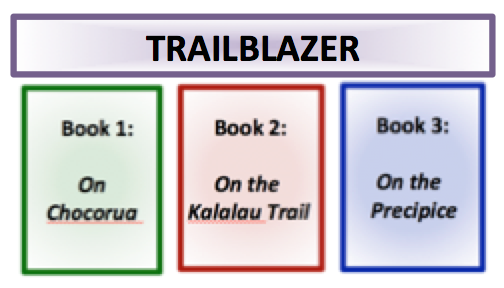
I took your suggestions to heart, gave a good deal of thought to the stories, and although no one proposed this specific series title, all of you inspired it: Trailblazer.
I considered the title Trailblazer: A Trilogy. But—maybe I won't stop at three. Who knows at this point?
I'll still be giving digital books of On Chocorua away to the first ten folks who voted for either option. If you are one of these winners, I'll contact you individually and see what format you prefer.
If you're curious about how I landed on Trailblazer, here's an excerpt from what will be the books preface:
A trailblazer is one who forges a path through uncharted territory, an effort that requires courage, tenacity, and integrity. Although others might follow behind, only seldom does the trailblazer have followers in mind.
Nathan Bartlett is a trailblazer—not because he follows established routes in the White Mountains, or on Kaua'i, or on Mt. Desert Island, but because he explores and then tests that inner path that tells him who he is and how he relates to the world around him. Sometimes this path leads to dead ends, or into mazes that confound him, or to the very edge of a cliff. He forges his path not by finding all the answers, but by identifying the questions that matter.
Nathan is a trailblazer on his own journey. And his success will be measured not by how well he follows someone else's path, but by whether he can forge his own.
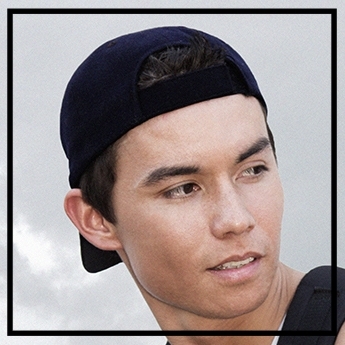
Photo by Alex Calder
If you don't hear from me about winning a free copy, I hope you'll still look for Nathan's face (by photographer Alex Calder) when On Chocorua is released this fall.
Thanks again for participating, and—as always—for reading!
August 29, 2018
“NAME THAT SERIES” and win a free copy of the first book!
I’m close to completing the first of three books of a series featuring a young man named Nathan Bartlett. And I need your help to select a title for the series.
*** The first ten people who choose the series title that gets the most votes will receive a free digital copy (epub or mobi, your choice) of On Chocorua! ***
All you have to do is tell me which title you prefer.

I’ve already decided on the titles of the individual books:
On Chocorua On the Kalalau Trail On the PrecipiceWhat I don’t have is a title for the overall series, though I have ideas. So I’m putting it to you for a vote. Here’s a little info about the series that might help you choose the winner.
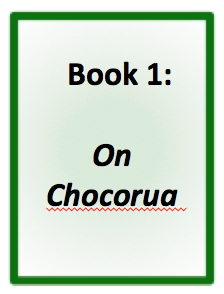
Each of the three books centers on a different hike, despite the fact that as the first book opens, Nathan has never hiked a mountain in his life. That all changes because of his love for two other young men and his confusion over his feelings. By the time he has been to the summit of Chocorua, he knows he must keep hiking.
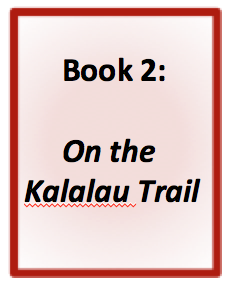
As the second book opens, a couple of years later, Nathan has begun to see himself as something of a mountain man. His hiking chops are serious, and the self-confidence his adventures give him are a huge part of his self-image. We follow Nathan along the Kalalau Trail on the western shore of Kaua’i, where he's conflicted about his feelings for another mountain man.
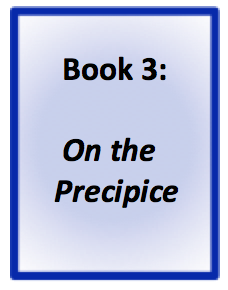
The Precipice Trail, on Mt. Desert Island in Maine, is indeed a precipice, both as a dangerous trail and as a potential turning point in Nathan’s life. In the third book, he faces a crucial choice: Does he continue with the mountain-man self-image he’s worked so hard to perfect, or does he follow his heart? And is it really necessary to choose?
Here are the two series titles I’m considering:A Natural ManNature Man
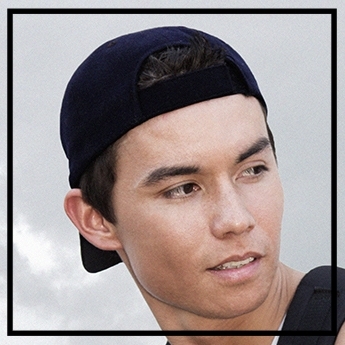
(Photo by Alex Calder)
And in case it helps, here’s an image of Nathan’s face:
So let me know which series title you like better, and when the votes are tallied I will let you know which title won and whether you were among the first ten to vote.
And thanks!
August 14, 2018
Trans girl uses girls’ bathroom. Sky falls.

OMG! Does the Bible really say THAT?
[Conversation in a coffee shop]
Christine: So, did I tell you we have new neighbors?Me: Do you like them?Christine: Oh, they’re wonderful! A sweet young couple. He sells insurance, and she teaches third grade. And, of course, they’ve started coming to our church.Me: Well, that’s the acid test, isn’t it? So, young, you say? How young are they?Christine: I’d say mid-twenties, I guess.Me: So they haven’t been married very long. I imagine your church will support them—Christine [quietly]: Oh, they aren’t married yet. Next month. [Brightening] They’ve invited us to their wedding![What I don’t say to Christine, because she wouldn't listen]
Are you aware the there are over 25 passages in the New Testament denouncing illicit sexual intercourse? Do you remember that Jesus called sexual sin evil?[1] Or that Paul says sexual immorality can be avoided by marrying?[2] Have you conveniently forgotten that St. Paul wrote several times about avoiding sexual immorality, about fleeing it, and about putting it to death?[3] You shouldn’t be going to these kids’ wedding. You should be stoning them to death. [Okay, stoning to death is more of an Old Testament thing, but without the Old Testament, where the Messiah is predicted, there would be no Christ.]

Christine has something in common with the person who attacked a twelve-year-old trans girl on Facebook: “…the Bible says God created man, and woman, not any transgender bs.” They both belong to the group of CINOs (Christians In Name Only) who cherry-pick scripture that supports what they already feel and/or believe. Too many CINOs try to use the Bible as a weapon.
The FB post I quoted came on the heels of an incident in which a middle school trans girl in Achille, OK had the nerve to use the girls’ bathroom when she couldn’t find the staff bathroom she had been told to use. That post was not the only one, and many other ugly and even violent things were posted. I want to focus on the one that’s not only ignorant, but also irrational. Biblically irrational, that is.
CINOs don't know their own Bible.The posting refers to God creating man and woman. Genesis agrees; in two of the creation stories it says God created male and female. Genesis 5:2* goes further: “He created them male and female, and blessed them, and called their name Adam.”
Hmmm… so, who was Eve?
But wait. We all know Eve was the woman, right? So why doesn’t the Bible say so?
But wait, again. It does. Just not in all three creation stories.
Genesis Chapter 5 is the third—count them: THREE—the third of three very different stories, beginning in Chapter 1 and continuing into the beginning of Chapter 5, about how Earth and Man were created. Here are just a few of the differences:
In Story #1, no one has a name. There is no garden, no tree of life, no tree of knowledge, no serpent, no disobedience, no punishment, no banishment. There is lots and lots of diversity, and every time God makes more of it he calls it “good.” He tells man to multiply.In Story #2, God creates and names Adam, then creates woman (Adam names her Eve, not God). There is a garden, a tree of life, a tree of knowledge, and a serpent. There is disobedience, punishment, banishment, toil, and pain. There is no sex until banishment, and even without any commandment to multiply we have Cain and Abel. In Story #3, we’re back to calling both male and female “Adam.” No Eve is named. There is no garden, or tree, or serpent, or commandment to avoid anything. There is no disobedience, or punishment, or banishment. No one is threatened with toil or pain or suffering. There must be sex, for there are lots and lots and lots of offspring, but there is no commandment to multiply. And there is no one named Cain or Abel. This is the only story of the three that says anything about man being made in God’s likeness.
What are we to make of this? I can tell you what CINOs do—or, what they don’t do, what they must not be doing. They must not be reading their own Bible. If they did, they would see that in the very start of the most important text ever written, God has given them three wildly conflicting stories, one right after the other, about The Beginning. And they should wonder what that means.
Here’s what I say it means. In the beginning, God said: “Guys, don’t take this stuff literally.”
Literal? Or just convenient?In his book Myths to Live By: The Collected Works of Joseph Campbell, Campbell makes the point that when a believer takes scripture (e.g., the Bible) literally, then (paraphrasing) even one crack of doubt, one hint of error will throw the entire work into the dustbin. This is a problem for absolutists and fundamentalists.
The problem for your average CINO is different. They just need to figure out which verses actively conflict with their personal belief system, and what’s left is all true—even if something in that remainder conflicts with my personal belief system, or with that of a transgender girl. And when one of the CINO's verses aligns powerfully with a their phobias, and someone goes against it, all hell breaks loose and—well, the sky falls.
It falls in the form of Facebook postings from people willing to castigate and torture, emotionally and physically, a young girl. Here are just a few the postings:
“Why are parents letting their kids be transgender? Parents and Churches need to shut this down, the Bible says God created man, and woman . . . not any transgender bs. Hell with new laws and new rules, this is what our future is if WE don’t stop it.”“If he wants to be a female make him a female. A good sharp knife will do the job really quick.”“Just tell the kids to kick a– in the bathroom and it won’t want to come back!!”
This time the sky fell on a 12-year-old girl. It fell on a girl who has already been through her own corner of hell on her journey to figure out who she was and then to understand why people wanted her to be other than who she was. Now she has to figure out why people hate her for who she is. She has to face people who would mutilate her, who call her “he,” who call her “it,” who refer to who she is as “bs.” She’s twelve years old.
In a time when Donald Trump (I will not use the title “president” in reference to him) and his cronies are encouraging divisiveness and hatred and fear of the “other,” the administration is removing existing federal guidelines protecting transgender students, including around bathroom use. And as for trans students battling for basic bathroom rights? The Education Department, which used to investigate incidents, is now ignoring them.
CINOs fail their own religion—and their own savior.Not all the blame for this sub-human behavior can be laid at the feet of CINOs. But lots of it can. Because CINOs are failing their own religion on two counts.
1. Jesus, the very prophet the CINOs claim to follow, would have offered comfort rather than castigation to this girl. He would have assured her that God loves her, that he loves her, that the most important things she can do are to know herself and love God with all of it (yes, even the trans part), and then she should love herself and love everyone else as much (Matthew 22:36-40).
2. Jesus would have stood up for her against those who would hurt her in any way. If he loved an accused adulteress enough to make a crowd stop throwing rocks at her (John 8:3-7), would he protect this girl any less? What would he have said to sub-humans who terrorize a helpless child?
The CINOs are doing neither of these things that their prophet has commanded them to do. Hence: Christians In Name Only. Wait until they see how much sky is going to fall on them.

Mark 7:21-231 Corinthians 7:1-51 Thessalonians 4:3-4; 1 Corinthians 6:18-20; Colossians 3:5
* All Bible references come from the World English Bible (WEB).
Subscribe to my blog
August 10, 2018
Every life is a story. What's yours?

Each of us lives within a story: our families and other loved ones; our experiences; our successes and failures; our hopes and dreams. And all of that affects, and is affected by, who we are at our core.
As a het, cis individual, I cannot imagine even needing, let alone having the kind of courage it takes for those who are LGBTQI+ to tell the world who they are. So when the (Joe) Biden Foundation launched the As You Are campaign earlier this week and asked for people to share their stories about LGBTQI+ equality and its lack, it gave me pause.
According to the program, the purpose of collecting stories is “to help educate the broader public about the critical importance of affirming, accepting, and supporting our LGBTQ young people, and the harms these youth face when their families and communities reject them.”
Beyond that statement, the foundation doesn’t specify how they will share the stories, other than to say it’s “with the hope that they will serve to inspire, to create communities, to heal families, and to change the broader culture to ensure a bright future for all LGBTQ young people.”
As the author of several novels about gay teens, I’m keenly focused on how young people are affected by society’s and government’s opinions and actions, so this program grabbed my interest. I’m also aware that for LGBTQI+ individuals, especially young people, sharing is a double-edged sword.

One blade: Release. Relief. Freedom. Validation. Self-love. Pride.

The other blade: Exposure. Vulnerability. Ridicule. Rejection. Pain.
The program has a web page where it invites people to describe themselves and tell their stories. (Note that they require you to agree to their Terms and Conditions statement. Presumably they are most interested in the stories of LGBTQI+ young people, and of older people in the community willing to tell stories about their experiences as a youth. However, there is a field asking if you’re an “ally, educator, parent, activist, etc.”
So as an ally, I told them my story. I told them about my writing motto (“The only thing wrong with being gay is how some people treat you when they find out.”). I told them of my second novel, Thinking Straight, about a gay teen in an “ex-gay” camp. I told them that my stories seek to assure teens that their destinies are not completely determined by their orientation, and I said that many of my characters are gay, bi, trans, gender queer, and intersex.
But I’m not sure it’s my story they want to hear.
So if you’re LGBTQI+, I’m asking you: Does the idea of sharing your own story, the story of how your life has been affected by the search for equality and recognition, appeal to you? Does it make you cringe, or does it make you want to shout out your truth, or both?
Whether you want to share your story with Joe Biden, I would love to hear from you about why or why not. You can use the Comments section of this post or contact me directly and confidentially with whatever you’d like to say.
And if you want to know more about the story of my journey as an author in this genre, just ask. It’s easy for me to share. I have nothing to lose.

Subscribe to my blog
June 4, 2018
SCOTUS to Gays: No cake, but you can eat some more s**t.

Thank you, Justice Kennedy et al, for throwing us into a modern day Animal Farm, where some are "more equal than others."
In the June 4, 2018 U.S. Supreme Court ruling (Masterpiece Cakeshop v. Colorado Civil Rights Commission), baker Jack Phillips has been exonerated for refusing to offer his professional services to all citizens equally. He now has permission to discriminate against gays.
Kennedy, writing for the majority, said that the Colorado Civil Rights Commission (which had ruled against Phillips), had not given due consideration for Phillips’ religious concerns. Kennedy believes the Commission disparaged Phillips’ religious argument, and possibly even his religious beliefs. So because Phillips might have been mistreated by his own state’s regulators, the federal government says he can mistreat gay people.
Kennedy added wording implying that this was a one-off case and that future cases in this category might not be ruled similarly. And to that I call, “Coward.”
There is nothing in the SCOTUS ruling to stop future cases from using this case as a precedent in support of religious extremists. For Kennedy to pretend otherwise is disingenuous and craven.
In Colorado, state law provides protection against discrimination based on disability, race, creed, color, sex, sexual orientation, marital status, national origin, or ancestry. What it does not protect against is religion discriminating against anyone, and yet that is the very protection SCOTUS just handed Phillips.
A Religious Free Ride: "Christians Only"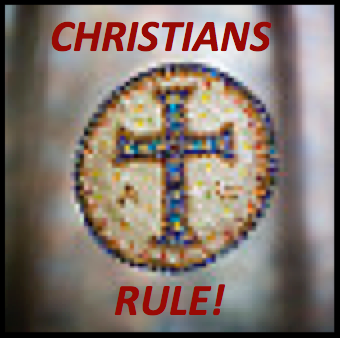
The LGBTQ community has come more and more into the gunsights of the religious "right" since the current president began his campaign. This is just one more bullet.
But—what if it weren’t a gay couple we were talking about?
Let's say Phillips subscribes to a white-supremacist religion in which people of color are deemed to be not quite human, and the engaged couple who walk into his shop is black. If he had refused to serve them, what would have happened? I suggest that if we think the chaos in Charlottesville was disturbing, we ain’t seen nothin’ yet. Allowing a business to turn away customers because they are black could easily start a race war that would spread across the country.
Or, say Phillips belongs to a fundamentalist Islamist sect in which women must be covered, must not go into public alone, must not speak to a man until spoken to, and must not conduct business on behalf of a man. A woman wearing Western-style clothing walks into his stop expecting to do business. He refuses to serve her. What happens next? I doubt that Kennedy et al would say, "Sure, that's fine, go ahead and discriminate against women." Even if SCOTUS agreed to hear this case, there's no way the baker would get a green light to deny the civil rights of a whole segment of society.
According to the Washington Post, Kennedy wrote: “religious beliefs cannot legitimately be carried into the public sphere or commercial domain, implying that religious beliefs and persons are less than fully welcome in Colorado’s business community.”
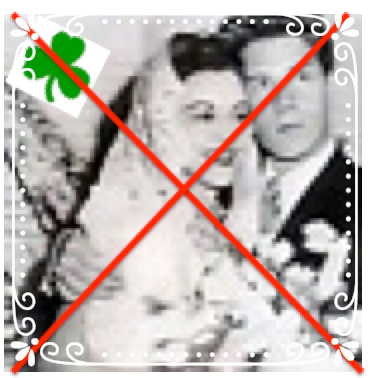
Um… excuse me? WHO is it who’s not welcome? Jack Phillips can proclaim his religious beliefs to all and sundry; that’s his right. But when SCOTUS says he can turn gay people away from his business, what kind of business is being promoted? I submit that it’s not one that Kennedy would have supported if Phillips’ religion were against people of Irish ancestry.
What SCOTUS should have done, given that Kennedy was so concerned about Phillps getting a fair shake, is to send the case back to Colorado for a re-trial under the condition that all parties’ concerns were given equal respect and consideration.
All Jack Phillips has to do if his religion is against marriage equality is not to marry a man. But where are the rights of citizens not to have others’ religion forced onto them? That famous first amendment guarantees us all this right—even “the gays.” And for pity's sake, Justice Kennedy. IT'S PRIDE MONTH!
I've heard a number of pundits insist that this ruling is not as dire as it sounds. And actually, that's probably true. Because as abominable as this ruling is, it isn’t the end of the world for gays. It’s just another day in the life.

Gay people have more to be proud about than the U.S. Supreme Court
Subscribe to my blog
March 16, 2018
School kids ask: Am I the next to die?

I’ve always lived by this rule: Your rights end where mine begin. And, conversely, mine end where yours begin. Far too many people think their right to bear arms obviates others’ right to life. I say, “No.”
The U.S. Constitution guarantees that the rights of the individual citizen will not be subject to the tyranny of the majority.
This means that even if a majority of the country’s citizenry would like to prevent African Americans from marrying Caucasians, the Constitution protects mixed-race couples and their rights. In 1967, when the U.S. Supreme Court ruled on Loving v. Virginia, the majority of Americans disagreed with the decision. Too bad.
Inalienable Rights
We’ve faced a number of these challenges in U.S. history. And now we face one that means life and death—too often, the lives of our children.
The Second Amendment to the Constitution says that because a well regulated militia is needed for the security of a free state, citizens have the right to keep and bear arms. But the Constitution would never have existed if not for the document that set the stage: the Declaration of Independence.
“We hold these truths to be self-evident, that all men are created equal, that they are endowed by their Creator with certain inalienable Rights, that among these are Life, Liberty, and the pursuit of Happiness.”
Life, liberty, and the pursuit of happiness... inalienable… This founding document for the rights of U.S. citizens tells us that the right to life is something that cannot be taken away.
Your Killer Owns Your Life
And yet, in mass shooting after mass shooting, from Columbine to Sandy Hook to Orlando to Parkland and in far too many places in between, people claiming their right to bear arms are rendering the right to life moot. Individuals armed with weaponry not remotely conceived of by the Constitution’s authors are rendering the lives of multiple citizens very, very alienable. According to Merriam-Webster online, this means the ownership of the right to life is effectively being transferred to the individuals who slaughter them.
So Dylan Roof owns the lives of the nine churchgoers he gunned down in Charleston. Omar Mateen briefly (before he was shot by police) claimed possession of 49 other lives when he opened fire randomly in an Orlando night club.
Your Child's Killer Owns Your Child's LifeMany of the lives obliterated forever during this muscle-flexing of the second amendment have been children.
We are massacring our children. The second amendment was never intended for this. Its current application was never what the authors of the Constitution had in mind.
The amendment needs to be amended. Until we do, Americans school kids will be haunted by this terrible question: AM I NEXT?

Subscribe to my blog
Robin Reardon: Speaking of writing...
- Robin Reardon's profile
- 181 followers



